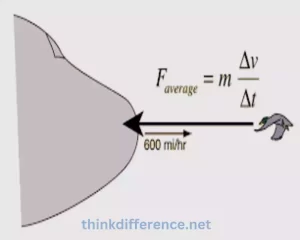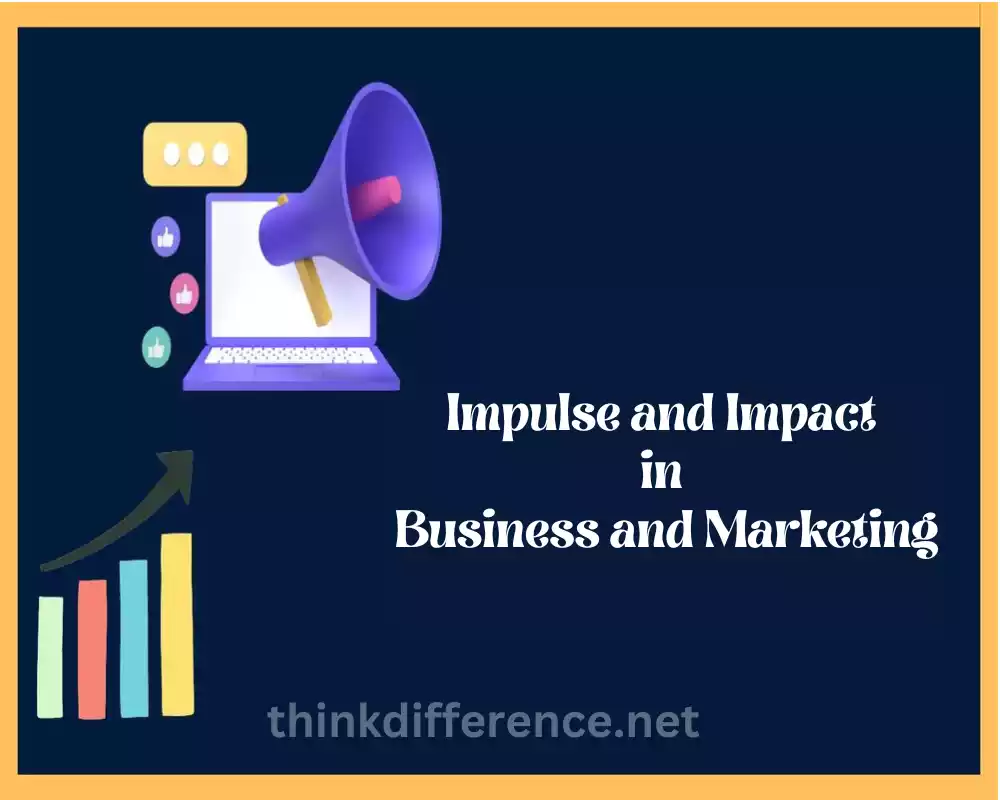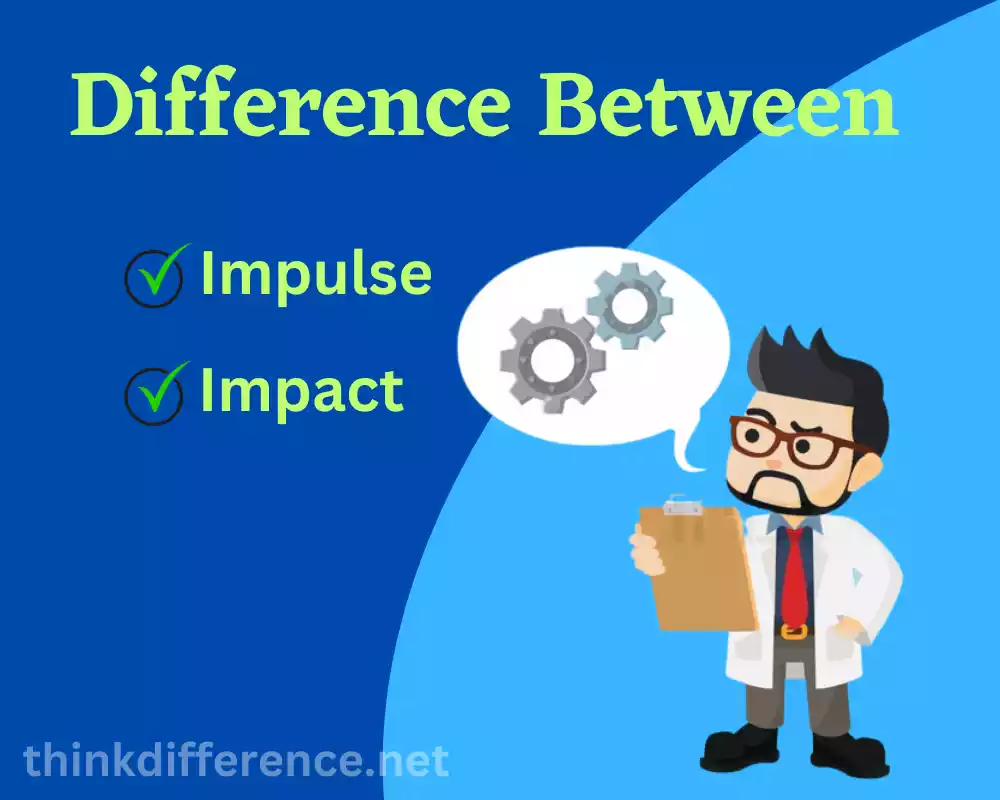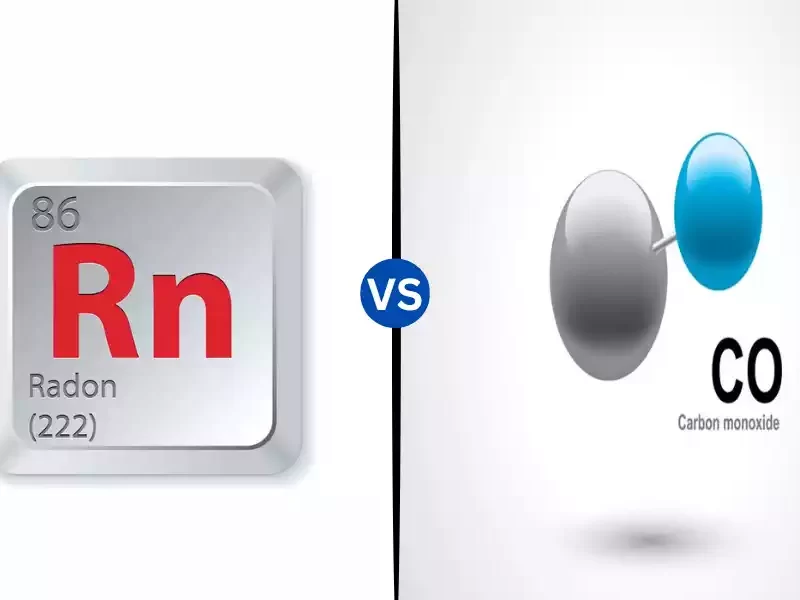Impulse and Impact are intertwined concepts which play a pivotal role in many aspects of our life, from personal development and relationships, business strategies and physical reality – they influence one another heavily and can assist with making better decisions across these various realms. Understanding their interplay will enable us to make wiser choices in every arena imaginable – this article explores both their significance in real-life situations as well as any consequences caused by them.
Importance of understanding the difference between Impulse and Impact
Understanding the difference between impact and impulse is of vital importance for various reasons:
- Safety: Recognizing the distinction between impulse and impact helps in assessing potential risks and implementing appropriate safety measures. By understanding the forces involved in different situations, such as collisions or sudden forces, individuals can take necessary precautions to minimize harm or injury.
- Injury prevention: Differentiating between impulse and impact enables professionals in fields such as sports medicine, physical therapy, and biomechanics to design effective injury prevention strategies. By understanding how forces act on the body, they can develop exercises, protective equipment, and training techniques that reduce the risk of injuries caused by sudden forces or collisions.
- Engineering and design: Engineers and designers must understand the difference between impulse and impact to create structures, vehicles, and safety systems that can withstand and mitigate the effects of external forces. This knowledge ensures the development of robust and reliable products that prioritize user safety and structural integrity.
- Performance optimization: In sports and athletics, grasping the dissimilarity between impulse and impact can enhance performance. Athletes can strategically use impulse to change momentum or direction during a game or competition, allowing them to gain an advantage over their opponents. Understanding impact helps them anticipate and absorb forces to prevent injuries and optimize their movements.
- Forensic investigations: In forensic science, differentiating between impulse and impact can aid in reconstructing crime scenes or accidents. By analyzing the patterns and characteristics of force application, investigators can determine the sequence of events and make informed conclusions about the circumstances surrounding the incident.
- Material science and product development: The understanding of impulse and impact is vital in material science, especially when designing materials or products that need to withstand sudden forces or collisions. By studying the effects of impulse and impact on different materials, researchers can develop stronger, more durable, and safer materials for various applications.
Comprehending the difference between impulse and impact is essential for safety, injury prevention, engineering, performance optimization, forensic investigations, and material science. It enables individuals and professionals to make informed decisions, implement appropriate safety measures, and develop efficient solutions to challenges related to force application and collision dynamics.
Understanding Impulse

Understanding impulse is important for several reasons:
- Momentum: Impulse is directly related to momentum. By understanding impulse, one can better comprehend how an object’s momentum changes when acted upon by an external force. This knowledge is fundamental in various fields, including physics, engineering, and sports.
- Collisions: Impulse plays a crucial role in analyzing and predicting the outcome of collisions. Understanding impulse helps in determining the change in momentum during a collision, which is essential for assessing the forces involved, estimating damage or deformation, and designing safety mechanisms.
- Sports and Athletics: Impulse is a key concept in sports and athletics, particularly in activities involving projectiles or body movements. Athletes can utilize impulse to their advantage by applying quick and powerful forces to change their momentum, accelerate, decelerate, or change direction effectively.
- Injury Prevention: In fields such as biomechanics and sports medicine, understanding impulse is crucial for preventing injuries. By analyzing the forces involved in various movements or impacts, experts can develop techniques, equipment, and training programs that minimize the risk of injuries caused by sudden forces.
- Force Application: Impulse provides insights into the application of forces over time. Understanding impulse helps individuals apply forces more effectively and efficiently, optimizing their actions in areas such as weightlifting, martial arts, or everyday tasks that require the application of force.
- Engineering and Design: Impulse is a fundamental concept in engineering and design, especially in areas involving mechanical systems or structures. By understanding impulse, engineers can design components, machines, or structures that can withstand and efficiently transmit forces, ensuring the integrity and reliability of their creations.
- Conservation Laws: Impulse is closely connected to the concept of conservation of momentum. Understanding impulse contributes to a better understanding of the principles and applications of momentum conservation, which is a fundamental law in physics.
Understanding impulse is important for comprehending momentum, analyzing collisions, optimizing athletic performance, preventing injuries, improving force application, engineering and design, and grasping the principles of conservation laws. It is a foundational concept that finds application in various fields and provides valuable insights into the behavior of objects subjected to external forces.
Understanding Impact

Understanding impact is essential for several reasons:
- Energy Transfer: Impact involves the transfer of energy between objects when they collide or come into contact with each other. By understanding impact, we can analyze how energy is transferred and transformed during collisions, which is crucial in fields such as physics, engineering, and materials science.
- Structural Analysis: Impact plays a significant role in analyzing the structural integrity of objects and materials. Understanding the effects of impact helps engineers and designers assess the strength and durability of structures, vehicles, and components, ensuring they can withstand the forces generated during collisions or impacts.
- Damage Assessment: Impact often leads to damage or deformation of objects. By understanding impact, experts can evaluate the extent of damage, identify failure points and develop strategies to mitigate or prevent damage caused by collisions or sudden forces.
- Safety and Protective Measures: Understanding impact is vital for implementing effective safety measures. By analyzing the impact forces involved in accidents or hazardous situations, safety protocols, protective equipment, and safety features can be designed to minimize injuries and ensure the well-being of individuals.
- Material Properties: Impact testing is commonly used to assess the behavior and properties of materials under dynamic loading conditions. Understanding the impact response of materials helps researchers and engineers select appropriate materials for specific applications, such as automotive crashworthiness, aerospace structures, or protective gear.
- Forensic Investigations: In forensic science, understanding the impact is crucial for reconstructing accidents or crime scenes. By analyzing the patterns, forces, and damage resulting from impact, investigators can determine the sequence of events, identify potential causes and draw conclusions about the circumstances surrounding the incident.
- Product Development and Design: Impact analysis is an integral part of product development and design processes. Understanding the effects of impact helps designers create products that can withstand expected forces and meet safety standards. It also allows for the optimization of product performance, durability, and user satisfaction.
Understanding impact is important for comprehending energy transfer, analyzing structural integrity, assessing damage, implementing safety measures, evaluating material properties, conducting forensic investigations, and designing products. It provides valuable insights into the behavior of objects during collisions or contact, enabling us to make informed decisions, enhance safety and develop innovative solutions in various fields.
Impulse and Impact in Physics
Impulse and impact describe interactions between objects and forces encountered, taking place within a physical context. Here we take a deeper look into this area of physics:
Impulse:
1. Definition: Impulse is the product of force and the time interval over which it acts on an object. It represents the change in momentum experienced by the object.
2. Formula: Impulse (J) = Force (F) × Time (Δt)
3. Unit: The unit of impulse is Newton-second (Ns) or kilogram-meter per second (kg·m/s).
4. Characteristics:
- Impulse is a vector quantity, meaning it has both magnitude and direction.
- Impulse causes a change in an object’s momentum. Which is the product of mass and velocity.
- Impulse is directly proportional to the change in momentum. A larger impulse will result in a larger change in momentum.
5. Application: Impulse is fundamental in analyzing collisions, calculating the change in velocity or direction, and understanding the transfer of momentum between objects.
Impact:
1. Definition: Impact refers to the collision or contact between objects, often resulting in a force being exerted over a specific duration.
2. Characteristics:
- Impact involves the exchange of energy and momentum between the colliding objects.
- It can cause deformation or damage to the objects involved.
- Force exerted by objects during collision depends on factors like mass, velocity, and type
3. Application: Understanding the principles of impact is crucial in fields such as automotive safety, structural engineering, sports, and material science. It helps in designing safety features, assessing structural integrity, analyzing crash tests, and predicting the behavior of materials under dynamic loading conditions.
Impact and impulse are fundamental physics concepts used to describe interactions between objects when they collide or come in contact. Impact refers to the actual collision while impulse measures the force applied as well as changes in momentum. Understanding these terms is integral for understanding collisions as well as predicting object behavior accurately as well as designing systems that resist impact forces and reduce them effectively.
Impulse and Impact in Business and Marketing
Impulse and impact are two concepts central to marketing and business, yet their meaning remains obscure for some people.

Explore how these terms relate to your operations by exploring them here:
Impulse:
- Impulse buying: Impulse buying refers to unplanned purchases made by consumers without much thought or consideration. It often occurs when consumers are influenced by sudden urges, emotions, or the immediate availability of a product or service.
- Point-of-sale (POS) strategies: Businesses often employ various tactics to encourage impulse buying at the point of sale. This includes strategically placing enticing products near checkout counters, offering limited-time promotions, or using persuasive displays to capture customers’ attention and trigger impulse purchases.
- Impulse in decision-making: Impulsivity plays an essential part in decision-making processes within organizations. You can observe it being used when taking quick and impulsive decisions is called for. For example, a business may make impulsive decisions to quickly seize an opportunity, respond to market changes or address unexpected challenges.
Impact:
- Marketing impact: In marketing, impact refers to the effectiveness or influence of marketing efforts on target audiences. It is measured by the outcomes achieved, such as increased brand awareness, customer engagement, sales or market share.
- Impactful campaigns: Businesses strive to create impactful marketing campaigns that resonate with their target audience, leave a lasting impression and drive desired actions. Impactful campaigns often employ creative storytelling, emotional appeal, memorable visuals and innovative approaches to capture attention and generate a significant response.
- Social impact: Businesses can have a positive social impact by emphasizing the products or services they provide or corporate social initiatives they undertake. This involves aligning business practices with social or environmental causes to make a meaningful difference in communities and society.
Relationship between Impulse and Impact in Business and Marketing:
- In the business and marketing context, impulse buying is driven by the desire to make quick purchasing decisions without much deliberation. Businesses aim to create an impact through their marketing strategies to influence consumers’ impulse buying behavior.
- Effective marketing campaigns with a strong impact can lead to increased impulse purchases by creating a sense of urgency, desire or emotional connection with the audience.
- Understanding consumer impulses and designing marketing strategies that generate a positive impact can result in improved sales, brand loyalty and market success.
Impulse and impact have distinct meanings in the business and marketing context. Impulse relates to unplanned or spontaneous buying behavior, while impact pertains to the effectiveness and influence of marketing efforts. Businesses aim to leverage impulse buying tendencies and create impactful marketing campaigns to drive consumer actions, achieve business objectives and make a positive impact on their target audience and society as a whole.
Impulse and Impact in Personal Development
Impulse and impact are two pivotal concepts in personal development that have an immense effect on individual growth and improvement. Here, we’ll investigate their relevance for personal advancement.
Impulse:
- Self-awareness: Understanding and managing our impulses is crucial for personal growth. Developing self-awareness helps us recognize impulsive behaviors and reactions, enabling us to make conscious choices rather than acting on immediate urges.
- Emotional regulation: Impulse control plays a vital role in emotional intelligence. Being able to manage impulsive emotional responses allows us to make more thoughtful decisions, maintain healthy relationships and navigate challenging situations effectively.
- Goal setting: Impulse can hinder progress towards long-term goals. Developing the ability to delay gratification and resist impulsive distractions empowers us to stay focused and take consistent actions aligned with our objectives.
Impact:
- Intentional actions: Personal development involves taking intentional actions that have a positive impact on our lives. It requires consciously considering the consequences and potential outcomes of our choices and behaviors.
- Growth mindset: Embracing a growth mindset entails recognizing the impact of our beliefs and attitudes on personal development. By cultivating a mindset focused on learning, resilience and continuous improvement, we can positively impact our abilities, skills and overall development.
- Influencing others: Personal development extends beyond ourselves. As we progress and mature, our actions, words and behaviors can have a direct effect on others around us. Being an inspirational role model and supporting their personal development journey are also keys.
Relationship between Impulse and Impact in Personal Development:
- Personal development hinges upon impact and impulse. By understanding and controlling our impulses, we can make conscious choices which have lasting benefits on our growth and wellbeing.
- Self-awareness and impulse control allow us to consider all possible consequences and impacts of our actions before acting, leading us towards more thoughtful decision-making processes.
- Acknowledging the impact our impulses may have on us and others can help us align our behavior to align with our values and goals, leading to enhanced personal development as well as meaningful connections.
Personal development requires striking an equilibrium between impulse and impact. By honing impulse control, self awareness and intentionality we can take conscious decisions, manage emotions effectively and take deliberate actions which positively influence both our personal growth as well as that of ourselves and others.
By understanding our impulses – their effects – and our responses we can develop greater self-awareness and effectiveness through greater self-knowledge and effectiveness.
Harnessing Impulse and Impact for Positive Change
To effectively harness impulse and impact to produce positive change, you need to strategically employ these concepts. Doing so will drive meaningful actions and bring forth fruitful results – here are a few tips on harnessing impulse for positive transformation:
- Self-reflection and awareness: Develop self-awareness by reflecting on your impulses and their potential impact on yourself and others. Understand your triggers, impulsive tendencies and the consequences of your actions. This awareness allows you to make conscious choices aligned with your values and desired outcomes.
- Mindful decision-making: Practice mindfulness in decision-making. Before acting, take some time to assess the situation and consider any possible ramifications of your actions. By making decisions carefully and deliberately, it can allow for more positive responses than reacting impulsively.
- Setting meaningful goals: Define clear and meaningful goals that align with your values and vision. Consider how your goals could have an effect on both yourself and others when setting them. This helps you channel your impulses and actions towards achieving positive change and personal growth.
- Planning and strategy: Develop a plan and strategy to harness your impulses effectively. Identify potential challenges or triggers that may lead to impulsive behaviors and create strategies to overcome them. Having a plan in place helps you stay focused and make intentional choices that drive positive impact.
- Accountability and support: Surround yourself with individuals who support your goals and hold you accountable for your actions. Engaging in conversations and seeking feedback from others can provide valuable insights and help you channel your impulses in a positive direction.
- Social impact and contribution: Consider the impact of your actions on a broader scale. Engage in activities and initiatives that contribute positively to society, whether through volunteering, advocacy or supporting causes that align with your values. By leveraging your impulses towards creating a positive impact in your community, you can effect meaningful change.
- Continuous learning and growth: Embrace a growth mindset and commit to ongoing personal development. Continuously learn, explore new perspectives and seek opportunities to grow and expand your skills and knowledge. By doing so, you enhance your ability to harness impulse and leverage impact for positive change.
Remember, harnessing impulse and impact for positive change requires intentionality, self-awareness and mindful decision-making. By aligning your actions to your values and creating meaningful outcomes, you can make a profoundly positive contribution both for yourself and others.
Comparison table of Impulse and Impact
This table highlights some key distinctions between impact and impulse:
| Aspect | Impulse | Impact |
|---|---|---|
| Definition | Change in momentum experienced by an object when a force is applied to it over time. | Collision or contact between objects, involving the exchange of energy and momentum. |
| Nature | Measurable quantity representing the effect of a force on an object. | Event or occurrence involving the interaction and exchange of energy and momentum. |
| Focus | Change in momentum resulting from a force acting on an object. | Collision or contact event itself and its effects. |
| Calculation | Product of force and time. Can be expressed as the area under a force-time graph. | Not typically quantified directly. Assessed by analyzing effects like changes in velocity, deformation, or damage. |
| Application | Physics, engineering, materials science. Used in analyzing collisions and dynamic situations. | Automotive safety, structural engineering, sports, forensics. Used to assess collision effects, structural integrity, and event reconstruction. |
| Units | Newton-seconds (Ns) or kilogram-meter per second (kg·m/s). | Not quantified directly. |
| Example | Pushing a sled over a distance, resulting in a change in momentum. | A car colliding with another car, causing damage and deformation. |
Real-Life Applications and Significance
Impact and impulse theories have numerous real world applications, here are just a few examples:
- Automotive safety: Understanding the impulse and impact involved in vehicle collisions is crucial for designing safer automobiles and improving occupant protection systems. Crash tests and impact force analyses allow engineers to design safety features such as airbags, crumple zones and seat belts that reduce collision effects.
- Sports performance: In sports, impulse and impact play a role in optimizing performance and preventing injuries. Athletes and coaches analyze forces and impacts involved in activities like running, jumping and tackling to enhance technique, reduce stress on joints and prevent overuse injuries.
- Biomechanics and injury prevention: Impulse and impact analysis is important in biomechanics and injury prevention research. Studying the forces exerted by our bodies when walking, running or lifting can provide important clues as to potential sources of injury, while offering ways of mitigating them.
- Structural engineering and building safety: In structural engineering, understanding the impact forces resulting from events like earthquakes or vehicle collisions is vital for designing safe and resilient buildings and infrastructure. Engineers analyze impact forces to determine structural integrity, reinforce structures and protect against catastrophic failures.
- Forensics and accident reconstruction: Impulse and impact analysis are valuable in accident reconstruction and forensic investigations. By analyzing the forces and impacts involved in accidents, experts can determine factors such as vehicle speeds, collision angles and contributing factors, aiding in determining liability and understanding the sequence of events.
- Product design and material science: Impulse and impact analysis help engineers and designers evaluate the durability and performance of products. Testing the impact resistance of materials, such as in the aerospace or consumer goods industry, ensures they can withstand forces and impacts during usage.
- Environmental and geological studies: Impulse and impact analysis are utilized in understanding natural phenomena like meteorite impacts, earthquakes and landslides. By studying the forces and impacts associated with these events, scientists can better assess risks, develop early warning systems and plan mitigation strategies.
In all these applications, understanding impulse and impact allows professionals to make informed decisions, enhance safety, improve performance and mitigate risks. The analysis of forces and impacts helps drive innovation, optimize design and ensure the well-being of individuals and structures in various real-life scenarios.
Conclusion
Impulse and Impact are two intertwined aspects of human life. Embracing spontaneity while considering the consequences of our actions allows us to harness the power of impulse for positive outcomes. By understanding the far-reaching effects of our choices, we can take incremental steps towards creating a better world. In the digital age, awareness about impulse and impact becomes even more critical as our actions can have global implications.
As responsible individuals, we must strive to strike a balance between acting on impulses and thoughtful decision making, ensuring that our actions leave a positive mark on the world.



